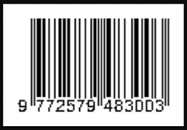PENGGUNAAN PAPAN TULIS INTERAKTIF DI KELAS THE USE OF INTERACTIVE WHITEBOARD IN CLASSROOM
DOI:
https://doi.org/10.32550/teknodik.v17i3.565Keywords:
Papan Tulis Interaktif, Inovasi, KelasAbstract
Tulisan ini merupakan hasil studi literatur tentang penelitian pemanfaatan papan tulis interaktif (PTI) di berbagai negara yang ada di dunia. Laporan hasil penelitian yang dikaji adalah yang dimuat dalam jurnal teknologi pendidikan dan diterbitkan antara 2009- 2013 dan didata oleh EdITLib. Pertanyaan penelitiannya adalah 1) bagaimana perkembangan atau inovasi PTI?, 2) bagaimana persepsi guru terhadap PTI?, dan 3) bagaimana model pemanfaatannya yang terbaik? Kesimpulannya, pertama, perkembangan papan tulis interaktif (PTI) telah mencapai kemajuan yang menakjubkan berkat berbagai inovasi yang memungkinkannya menjadi produk teknologi pembelajaran yang sangat membantu proses pembelajaran interaktif di kelas, kedua guru merasa nyaman menggunakannya dan siswa merasa antusias untuk memanfaatkannya, ketiga masih perlu penelitian lebih lanjut mengenai model pemanfataannya yang didukung oleh teori belajar, yang menghasilkan perubahan proses pembelajaran yang efektif, dan perubahan pada penggunanya yaitu guru mengajar dan siswa belajar.
Â
This article is the result of the literature research on the use of interactive whiteboards (Papan Tulis Interaktif) in various countries in the world. Report of the results of studies being reviewed were those published within 2009 and 2013 and recorded by EdITlib. This article tries to answer the following questions:
1) how is the development or inovation of interactive whiteboard? 2) what is the teacher’s perception on the interactive whiteboard? and 3) what is the best model of the utilization of interactive whiteboard? The research conclusions are: firstly, the development or innovation of interactive whiteboard (PTI) has achieved amazing progress, as a result of a variety of innovations that enable it to become a product of educational technology that greatly assists the process of interactive learning in classroom; secondly, both teachers and students feel comfortable and are excited to use it; thirdly, further research is needed on the utilization of interactive whiteboard that is supported by learning theory, which will influence the effectiveness of learning process, and change of teaching and learning method in both teachers and students.
References
Aytac, T. 2013. Interactive Whiteboard factor in Education: Students’ points of view and their problems, Academic Journal Vol. 8(20), pp. 1907-1915, 23 October, 2013. DOI: 10.5897/ERR2013.1595. ISSN 1996-0816 © 2013 Academic Journals http://www.academicjournals.org/ERR
Betcher,C and Lee, M. 2009. The Interactive Whiteboard Revolution: Teaching with IWBs, Australia: ACER Press, Chamberwell Victoria.
Hall, J., Chamblee, G. & Slough, S. 2013. An Examination of Interactive Whiteboard Perceptions using the Concerns-Based Adoption Model Stages of Concern and the Apple Classrooms of Tomorrow Model of Instructional Evolution. Journal of Technology and Teacher Education, 21(3), 301-320. Chesapeake, VA: SITE. Didownload December 11, 2013 dari http://www.editlib.org/p/40700.
Hedberg, J., & Freebody, K. 2007. Towards a disruptive pedagogy. Didownload dari http://www.ndlrn.edu.au/ verve/_resources/towards_a_disruptive_pedagogy_2007.pdf
Lewin, C., Somekh, B., & Steadman, S. 2008. Embedding interactive whiteboards in teaching and learning: The process of change in pedagogic practice. Education and Information Technologies, 13, 291–303.
Isman, A., Abanmy, F.A., Hussein, H.B. & Al Saadany, M.A. 2012. Saudi Secondary School Teachers Attitudes’ towards Using Interactive Whiteboard in Classrooms. Turkish Online Journal of Educational Technology - TOJET, 11(3), 286-296.
Nicholson, D. 2009. 20 interactive whiteboard resources for teachers [Web log post]. Didownload dari http:// www.whiteboardblog.co.uk/2009/07/20-interactive-whiteboard-resources-for-teachers/
Northcote, M., Mildenhall, P., Marshall, L., & Swan, P. 2010. Interactive whiteboards: interactive or just whiteboards? Australasian Journal of Educational Technology, 26, 494–510.
Scholastic. 2013. Teachers. Didownload dari http://www.scholastic.com/ smarttech/teachers.htm
Spector, J. M. 2013. Emerging Educational Technologies and Research Directions. Educational Technology & Society, 16 (2), p. 21–30.
Wong, K., Goh, P., and Osman, R. 2013. Affordances of Interactive Whiteboards and Associated Pedagogical Practices: Perspectives of Teachers of Science with Children Aged Five to Six Years. Turkish Online Journal of Educational Technology- TOJET, 12(1), 1-8.
Xu H. L. and Moloney, R. 2011. Perceptions of interactive whiteboard pedagogy in the teaching of Chinese language. Australasian Journal of Educational Technology, 2011, 27(2), 307-325.
Downloads
Published
How to Cite
Issue
Section
Citation Check
License
Please download and complete the Form, Copyright Transfer, and Ethics Statement Form. The following is provided at the time of submitting the text (Upload Additional Files):









